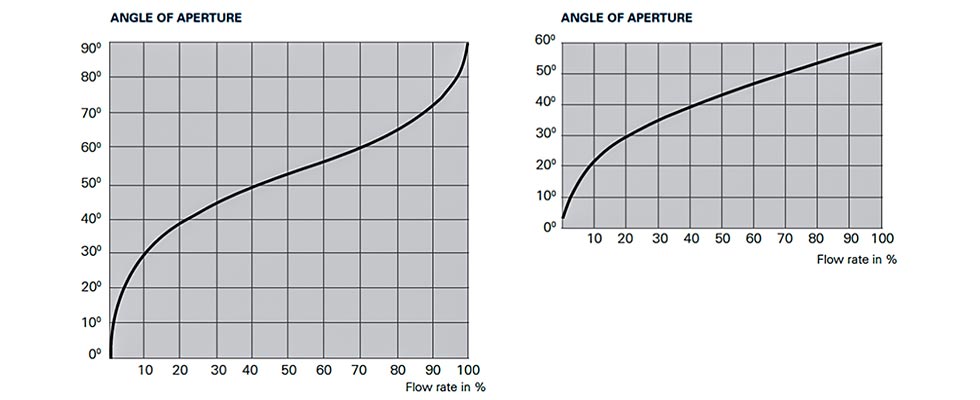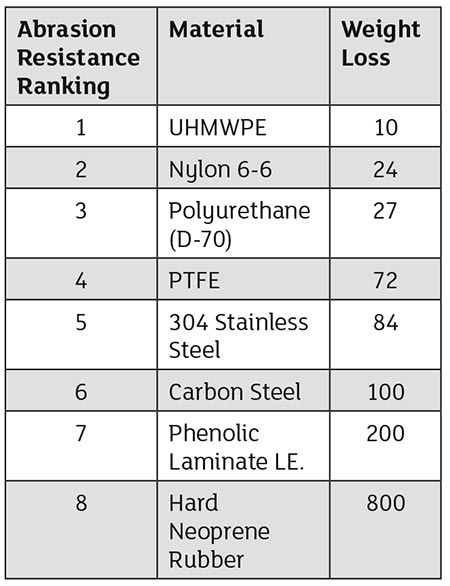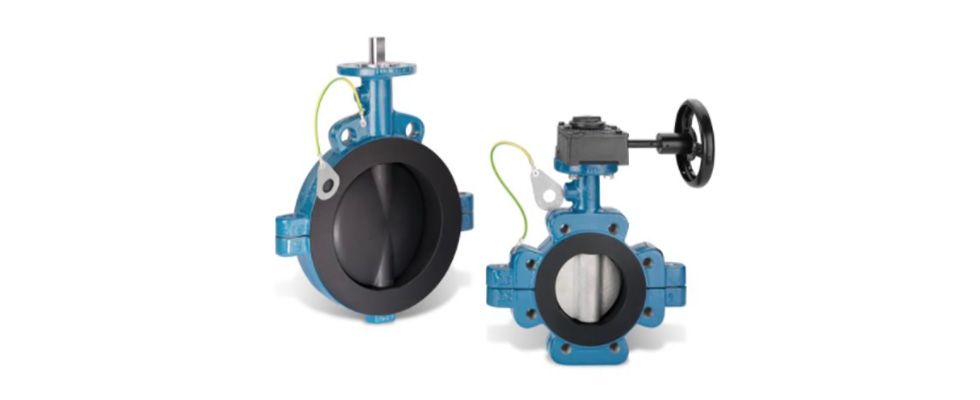Fluid handling presents many of the challenges faced by industries that deal with the transference of media. It is not uncommon to find different fluid states (gas, liquid, slurry or fluidized solid) within a piping system that require a way to control the flow of the fluid.
Strategically placed valves are a powerful means to facilitate, impede or throttle this flow. Due to its versatility, the butterfly valve is one of the most commonly used industrial valves.
A butterfly valve is a quarter-turn bidirectional valve that can be fully opened or closed with a quarter-turn of the disc. The disc control can be a lever, a handwheel, or a pneumatic or electric actuator. Valve designs include zero offset (also referred to as concentric), double offset and triple offset.
The zero offset butterfly valve is most commonly used in general service applications. More demanding applications that see higher pressures and temperatures (such as superheated steam) require double or triple offset designs that use a cam action to seal.

An advantage of the butterfly valve is the simple, compact design. This simplified design results in a more cost-effective valve that is easy to install and work with. It also typically has lower overall maintenance costs. This combination can be beneficial for large valve applications.
Throttling will be limited to low differential pressure services with this design. Additionally, there is a risk of cavitation and choke due to constant exposure of the disc to the media flow. To mitigate the effects of cavitation, many valve manufacturers will present a characteristic curve or optimal angle of aperture. It is important to operate within this linear boundary.
Butterfly valves are comprised of four main components: the body, stem, disc and seat. The body can be manufactured in either the lug or wafer style. The difference between the two is in the mounting design.
The lug can be considerably larger as it incorporates threaded alignment inserts, allowing it to be installed directly into a system with bolts. This also provides the option to use the valve in a dead-end service. The wafer is designed to sandwich tightly between two flanges and seals against bidirectional pressure.

IMAGE 3: Sand slurry test” data-entity-type=
The stem in a butterfly valve holds the disc in its proper position and provides its rotational direction when actuated. Successful control of flow is attributed to the disc and seat combination. When in a closed position, the disc seals against the (typically) soft seat that lines the internal periphery of the valve body. Depending on the manufacturer, some valve designs will incorporate a backing or energizing ring to help establish a sufficient seal.
Proper seat and disc material choices are essential when choosing a valve for an application. Selecting the wrong valve can damage the entire operation. It is important to know the STAMPS (size, temperature, application, media, pressure and speed) details to make a proper selection. With this, valve manufacturers can help identify the optimal valve type for the application.
Typical butterfly valve soft seats and, when applicable, lined disc materials include ethylene propylene diene monomer (EPDM), polytetrafluoroethylene (PTFE), and ultra-high-molecular-weight polyethylene (UHMWPE). EPDM is commonly used in the HVAC industry. It is resistant to polar compounds such as water, alcohols and glycols, as well as alkaline solutions like concentrated sulfuric acid and chlorinated water. It does not, however, perform well in petroleum-based oils. PTFE, often branded as Teflon, is one of the most suitable materials for use in highly corrosive and aggressive chemical applications.
Lastly, UHMWPE offers abrasion resistance combined with strong chemical resistance. UHMWPE shines in weight loss tests and provides an alternative to expensive exotic alloys such as Inconel, Stellite, titanium and duplex stainless.
Water purification processes are a perfect example of a seemingly innocuous application with hidden challenges. A closer look at the purification process shows multistage treatments to ensure the highest purity possible is provided for consumption. With multiple filtration layers involving different chemicals, the water ultimately comes to a final stage where it is mixed with ozone (O3) to eradicate undesirable microorganisms. Because it dissipates so quickly, ozone is an effective and efficient method of sterilization.
It is, however, a highly toxic gas (a mere 100 micrograms per cubic meter of air can have significant health effects) and the need for a leak-free seal is crucial in this application. In addition to being chemically compatible with the chemicals purifying the water, the valve must meet the food and drug compliance regulations of the governing countries since they will be in contact with the media.
Application Example
An operation needs a butterfly valve for a 10-inch Class 150 flange. The media is sand at ambient temperatures. A butterfly valve with an abrasion-resistant disc and liner are recommended to help improve the valve longevity and reduce downtime. The two best material options for this would be UHMWPE or a ceramic disc and liner.
Both materials are more resistant to abrasives than stainless steel, but their prices are different. While zirconia ceramic valves are abrasion-resistant, UHMWPE may have a better economical price and general longevity.

